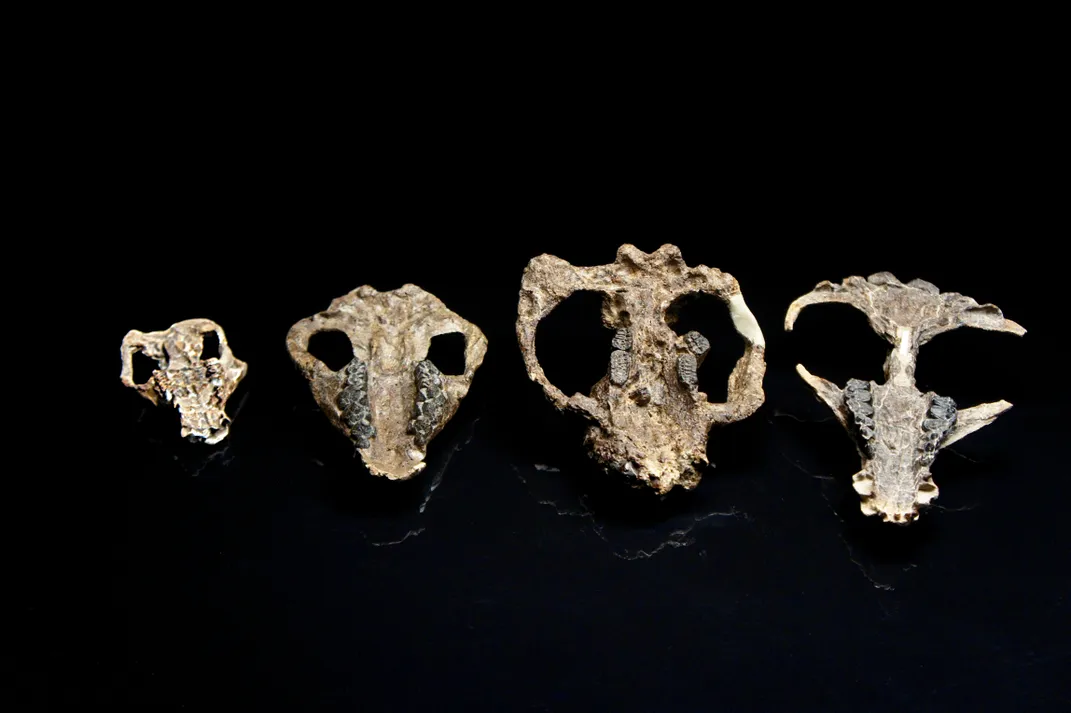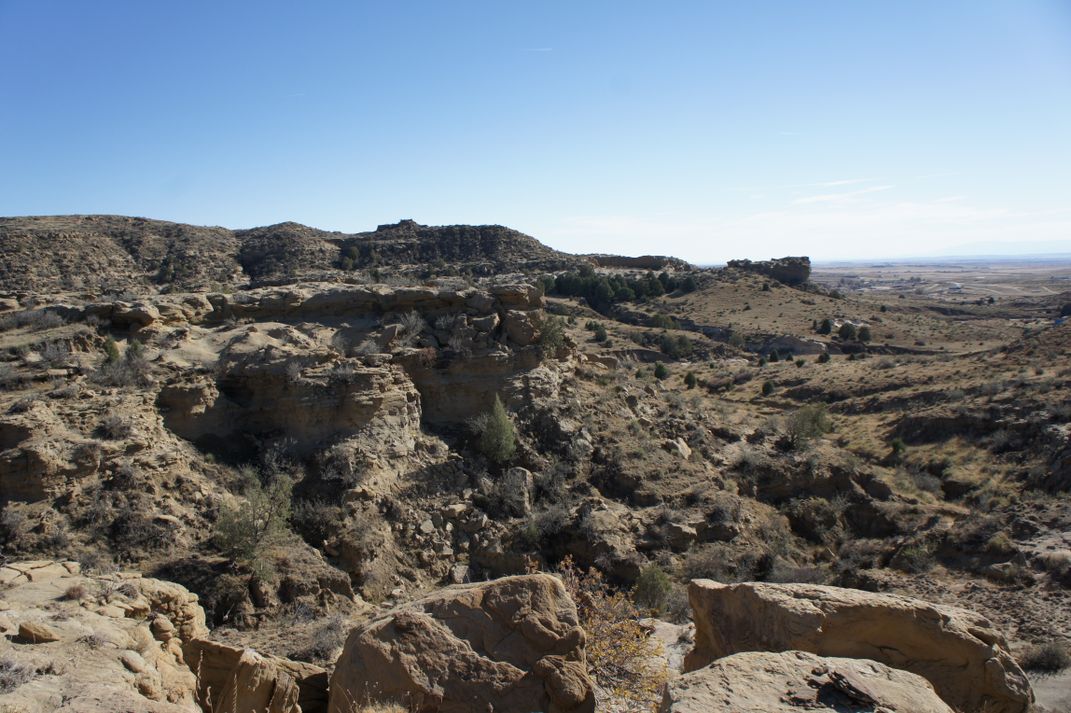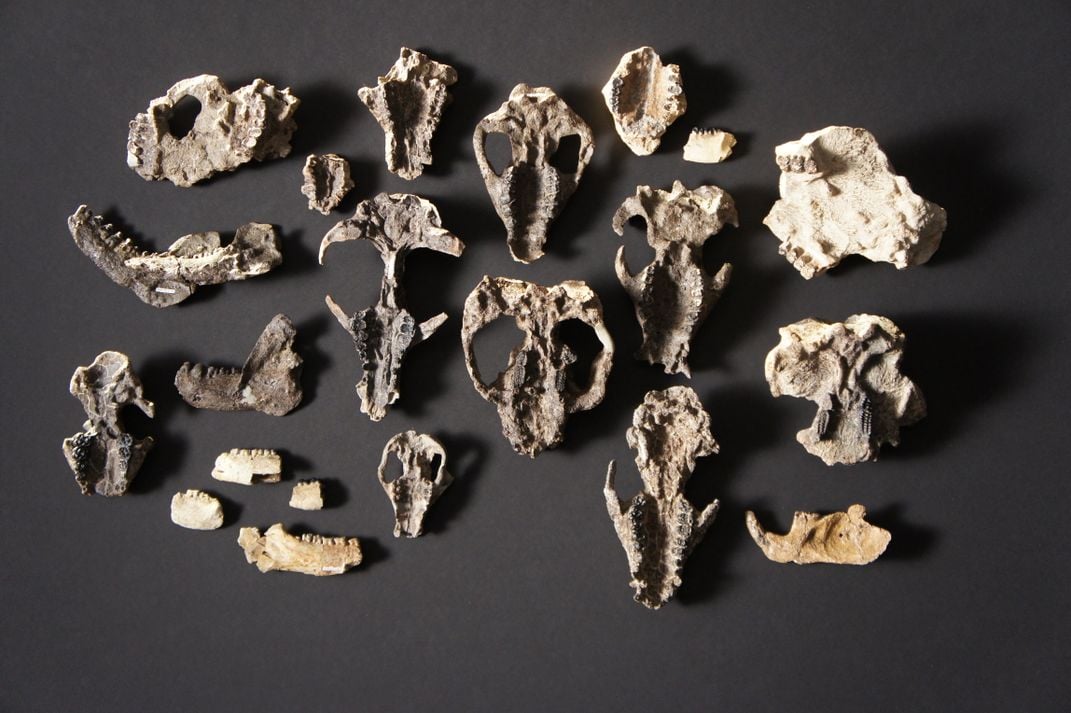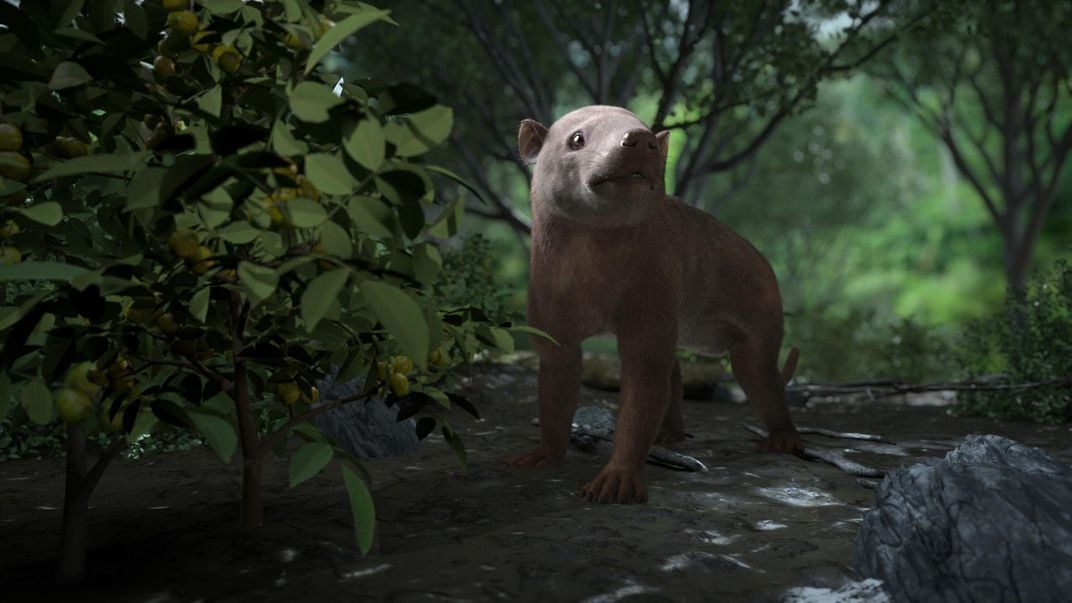Fossil Site Reveals How Mammals Thrived After the Death of the Dinosaurs
Recent discoveries highlight how mammals lived before and after the asteroid impact that triggered the world’s fifth mass extinction
:focal(1142x676:1143x677)/https://tf-cmsv2-smithsonianmag-media.s3.amazonaws.com/filer/36/98/36985e02-182f-4e11-937a-83946bc81d92/lyson11hr.jpg)
In central Colorado, at a place called Corral Bluffs, there lies an unusual graveyard. The ranks of the dead aren’t filled with people, but animals that lived 66 million years ago. Preserved in hardened concretions of stone lie the remains of turtles, crocodiles, and most of all, mammals that lived in this place during the first million years after the terrible impact that triggered the extinction of the dinosaurs. These animals form a part of our own evolutionary narrative—the story of how mammals went from scurrying around the feet of larger creatures to dominating the continents of the world, evolving into a variety of unique beings, including ourselves.
Mammals are not recent additions to the world that came after the time of the dinosaurs. The oldest mammals go back much further in time, and contrary to the standard story of shrew-like critters kept in check by monstrous reptiles, mammals thrived during Mesozoic era. The asteroid impact that felled the “terrible lizards” was also a portentous event for the mammals that had already been plying their own success for tens of millions of years.
The mammalian story is a complicated one. Paleontologists still don’t entirely agree about the identity of the very first mammals. Modern mammals are easy to spot—they have mammary glands and produce milk, among other traits like delicate inner ear bones and fur. These characteristics are what gives our family the name “mammal.” But further back into the fossil record, the only way to identify a mammal is from bones, teeth and shared anatomical features.

Depending on who you ask, mammals can be regarded as a broad group called mammaliformes that appeared by the Late Triassic—when dinosaurs were just beginning to diversify themselves—around 220 million years ago. But mammaliaformes is a broad group that includes lineages that are totally extinct today. The last common ancestor of all modern mammals lived sometime during the Jurassic, over 160 million years ago. Regardless of what was the earliest mammalian beast, though, animals very closely related to mammals have been around for nearly as long as the dinosaurs, and they underwent an evolutionary explosion during the Mesozoic.
“Often people are surprised to hear that mammals were around at all in the Mesozoic,” a time usually associated with dinosaurs and other reptiles, says University of Oxford paleontologist Gemma Louise Benevento. And even when mammals are included in studies of the Mesozoic, they are often characterized as small, shrew-like insectivores like the 205 million-year-old Morganucodon from Wales and China. This picture, Benevento says, primarily comes from 100-year-old research carried out on North American fossil mammals, where the record of tiny teeth and bones ostensibly shows mammals scurrying in the shadows of caves until after the extinction event at the end of the Cretaceous period. But recent discoveries around the world have changed the story, revealing that mammals were thriving alongside the dinosaurs.
Mesozoic beasts came in many forms. Castorocauda was the Jurassic equivalent of a beaver, complete with a scaly, flattened tail. Volaticotherium, from about the same time, resembled a flying squirrel. Fruitafossor, by contrast, was like a Jurassic aardvark, with powerful limbs that appear well-suited to tearing open termite nests. And the badger-sized Repenomamus was an omnivore that, thanks to fossil stomach contents, we know ate baby dinosaurs. Every year a few more mammal ancestors are added to the list.
Then, one day 66 million years ago, a catastrophic asteroid impact triggered a devastating mass extinction that killed off nearly all dinosaurs—leaving only birds—and reshuffled the evolutionary deck for mammals. The event is often interpreted as a stroke of cosmic luck that allowed mammals to step out of the shadow of the reptiles and expand in size, shape, behavior and habitat. But as paleontologists continue to dig into the critical time after the impact, the story is becoming more complex. The rise of the mammals was not necessarily assured, and recovery from the disaster took far longer than expected.

The fossils of Corral Bluffs are part of that story. Described by Denver Museum of Nature and Science paleontologist Tyler Lyson and colleagues, the stacks of fossils and rock in this pocket of Colorado document approximately the first million years of the Paleocene, the time period directly following the Cretaceous after the mass extinction. Correlating the mammal fossils to others from the site and a carefully calibrated timescale, the research team was able to come up with a rough timeline of how mammalian beasts transformed in a world where the likes of Tyrannosaurus no longer roamed.
Mammals did not emerge from the extinction event unscathed. Before the asteroid strike, Lyson says, the largest mammals were about the size of a raccoon. Immediately after, the biggest mammals were about rat-sized. But in a world without towering dinosaurs, new opportunities opened for mammals.
“Within 100,000 years after the extinction, we have a different type of raccoon-size mammals,” Lyson says, with additional fossils from Corral Bluffs revealing an increase size over time. By the 300,000-year mark, the biggest mammals were about the size of large beavers, and those that lived 700,000 years after the impact could weigh over a hundred pounds, such as Ectoconus ditrigonus, a herbivore unlike any mammal alive today. “This is a hundred-fold increase in body size compared to the mammals that survived the extinction,” Lyson says. Mammals wouldn’t go through this sort of rapid growth again for another 30 million years.

The question facing paleontologists is what spurred this rapid growth. A combination of factors were likely at play. Not only did the dinosaurs that munched mammals disappear, but a warming global climate changed the makeup of forests and allowed for the evolution of new plants. Legumes—energy-rich plants and the ancestors of bean—evolved for the first time. The botanical changes may have helped provide the fuel for mammalian growth, Lyson says, with climate, plants and mammals all tied together in a story of recovery from one of the world’s most devastating mass extinctions.
“For the first time, we are able to link changes in plants and animals together, and more importantly, we are able to place all of these changes in a high-resolution temporal framework,” Lyson says.
Despite the relief of living in a world without rapacious dinosaurs, mammals took time to expand into the wildly varied family of beasts that diversified throughout the Cenozoic, from herbivorous “thunder beasts” to saber-toothed cats to walking whales.
Earlier this year, Benevento and colleagues published a study looking at mammal jaws from the Mesozoic and into the following Cenozoic era. The researchers were interested in the different shapes that mammal jaws took as related to diet. What they found was that mammal jaw disparity—and therefore the variety of herbivores, carnivores, omnivores and insectivores—rose sharply during the Mesozoic, before the impact.

But the extinction changed mammalian luck. Even though the variety of jaw shapes stayed the same through the extinction event, Benevento says, different mammals rose while the old varieties died off. The extinction was terrible for the more archaic mammals but a boon to our distant relatives and ancestors, allowing more modern mammals to take up the ecological roles previously filled by other species. “Between the Cretaceous and Paleocene, we have an extinction and turnover of mammals with one group decreasing and the other increasing,” Benevento says.
The rise of mammals took time. It wasn’t until the Eocene, more than 10 million years after the impact, that mammals became truly large and evolved into an array of beasts to rival the dinosaurs.
“There are no known mammals filling the large grazer niche in the Mesozoic,” Benevento says, and it took about 10 million years for herbivorous mammals to grow big enough resemble today’s bison and antelope. It’s easy to take the evolutionary success of mammals as a foregone conclusion, especially given that we’re a part of the family, but new fossils are only just now revealing the deep and tangled roots of our own evolutionary tree.
/https://tf-cmsv2-smithsonianmag-media.s3.amazonaws.com/accounts/headshot/RileyBlack.png)
/https://tf-cmsv2-smithsonianmag-media.s3.amazonaws.com/accounts/headshot/RileyBlack.png)